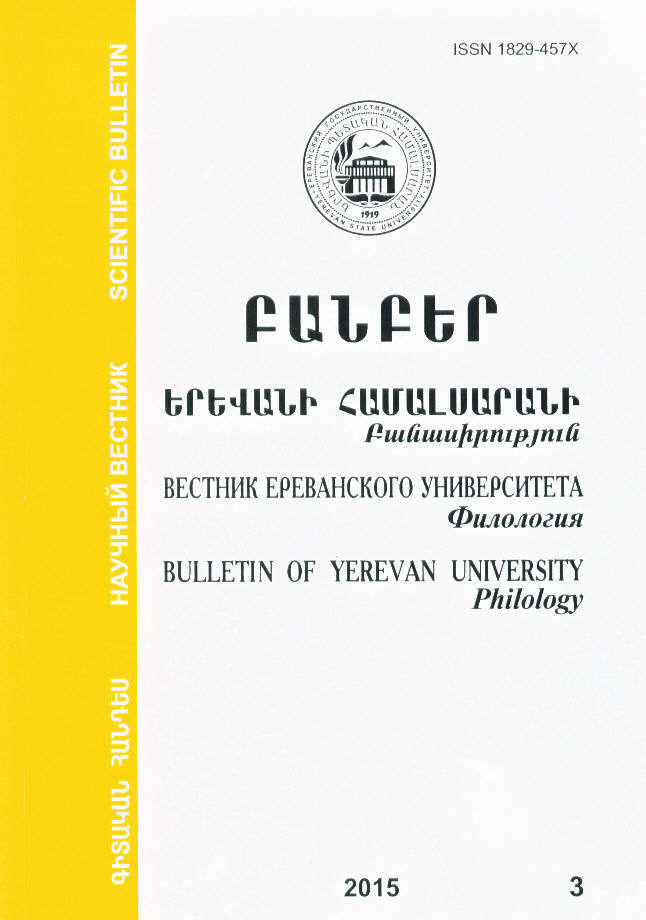The Conceptual Fundamentals of G. Jahukyan’s “Universal Theory of Language”
DOI:
https://doi.org/10.46991/BYSU:B/2015.6.3.003Keywords:
Universal linguistic theory, Universal language model, linguistic structures, substance linguistics, invariant and variative linguisticsAbstract
Academician G. Jahukyan’s “Universal Theory of Language” (published in 1999, in Russian) is a valuable work that recapitulates the author’s general linguistic views. In contrast to structuralist theories, which consider the perception of language predominantly as a framework of form and pure relations (glossematics); and those which following Saussure’s ‘Course’ analyse the language as a self-contained whole, Jahukyan offers a substantialist conception of language. According to this conception, many linguistic expressions (e.g. metaphors) connected with the material world or human relationships would simply be incomprehensible if analysed in isolation, cut off from the material world. The celebrated scientist G. Jahukyan, on the grounds of the “universal theory of language” (UTL) developed by him, not only interprets many known principles of theoretical linguistics anew but he also offers up a number of new ideas (such as “universal patterns of language” (UPL) as a method of analysis for linguistic realities; a new scheme of linguistic structure based on invariant and variative aspects; syntagm defined as an absolutely new perception of a linguistic unit; focus on the role of syntagm among other linguistic units; distinction of linguistic levels through biplane units, etc.). G. Jahukyan’s “Universal Theory of Language” not only ranks as one of the greatest achievements of the author, but it is also an outstanding contribution to the field of theoretical linguistics in general.
Downloads
Published
How to Cite
Issue
Section
License
Copyright (c) 2021 Bulletin of Yerevan University

This work is licensed under a Creative Commons Attribution-NonCommercial 4.0 International License.

